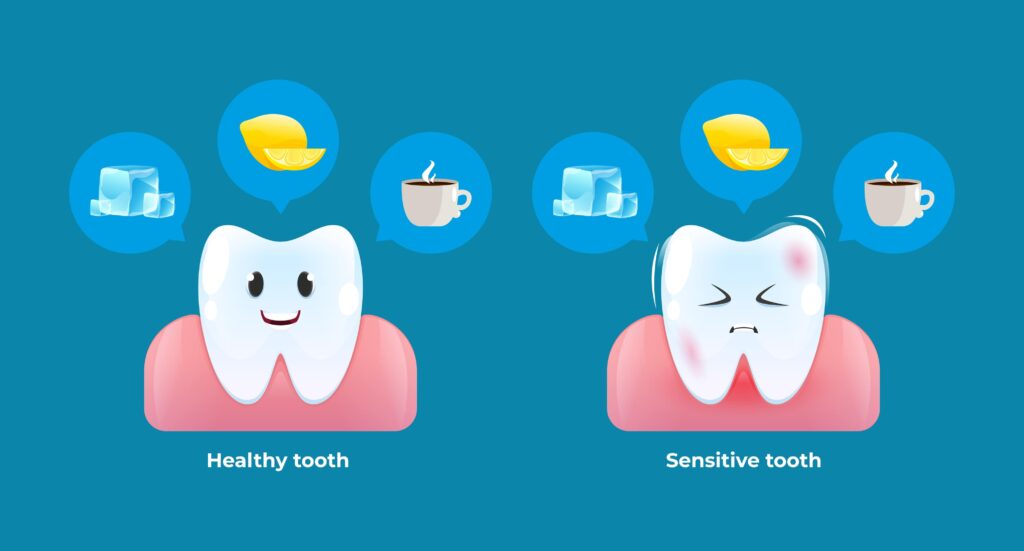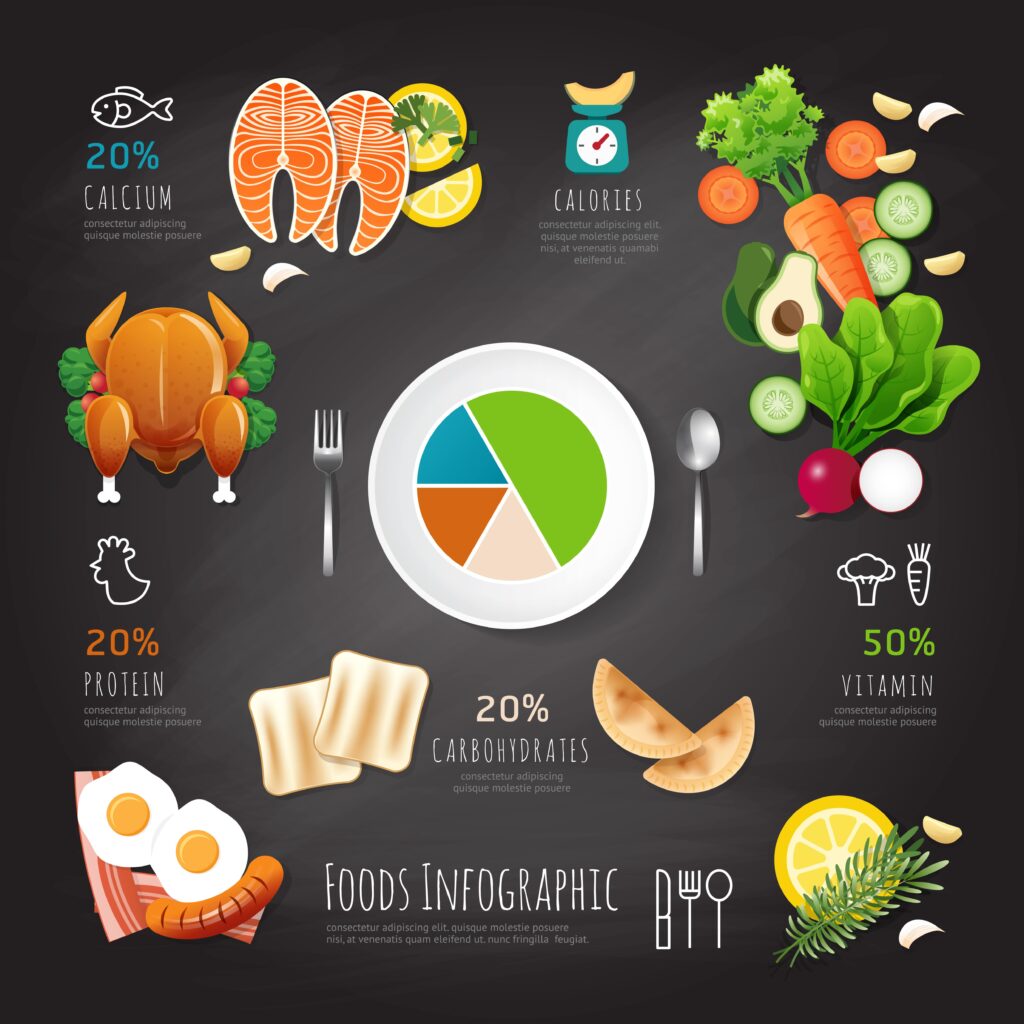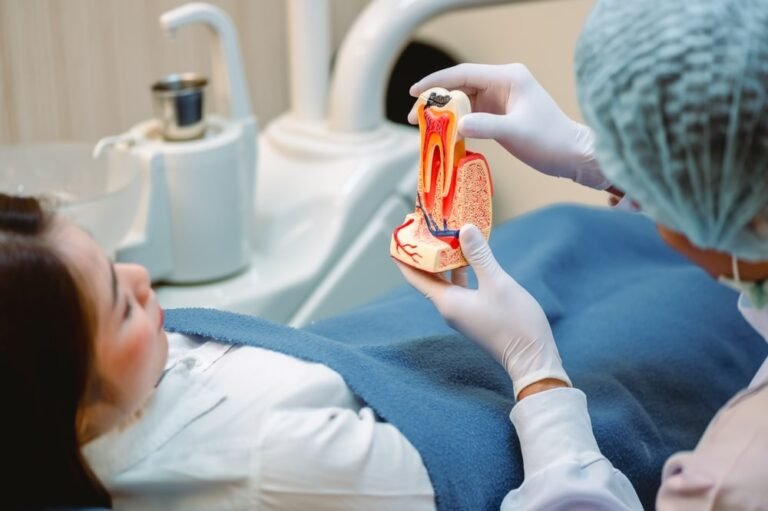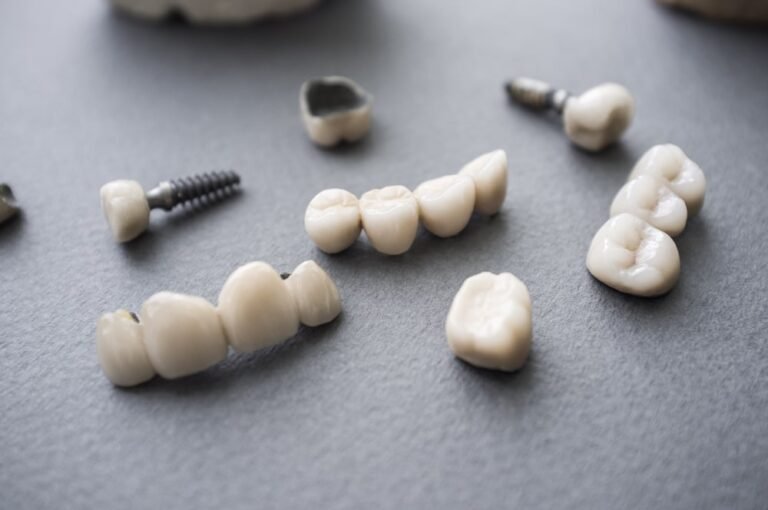Picture this: You’re reaching for that perfectly chilled glass of water on a hot Toronto afternoon, or perhaps a comforting mug of steaming coffee on a chilly morning. Suddenly, a sharp, shooting pain jolts through one of your teeth. Ouch! If this scenario sounds all too familiar, you’re not alone. Tooth sensitivity is a common, often perplexing issue that can turn simple pleasures into painful encounters. While many factors contribute to sensitive teeth – from vigorous brushing to gum recession – your daily diet plays a far more significant role than you might imagine. What you eat and drink can either be a silent aggressor, constantly eroding your tooth’s protective layers, or a powerful ally, strengthening your enamel and soothing discomfort. At White Tooth Dental, led by Dr. Kristina Pahuta, we believe in a holistic approach to oral health. That means understanding how everything, from your brushing habits to your breakfast, impacts your smile.
Let’s explore how dietary choices can transform your experience with sensitive teeth, turning those painful “ouches” into comfortable “ahhs.”
Understanding the “Ouch”: What Exactly Are Sensitive Teeth?
To truly understand how food affects your sensitive teeth, let’s take a quick peek inside a tooth.
Your teeth aren’t just solid bone; they’re intricate structures designed for chewing, speaking, and protecting delicate nerves.

Think of your tooth like a tiny, perfectly engineered fortress:
- Enamel: This is your tooth’s visible, hard, outermost layer – the strong “armor” that protects the sensitive parts beneath.
- Dentin: Beneath the enamel lies dentin, a softer, yellowish material filled with thousands of microscopic tubes called dentinal tubules. These tubules lead directly to the tooth’s innermost core.
- Pulp: Tucked away in the center is the pulp, which contains nerves and blood vessels. This is where the “ouch” sensation originates.
Normally, your enamel acts as a robust shield, preventing external stimuli from reaching the dentin and the sensitive nerves within the pulp.
However, when enamel wears away, or gums recede (exposing the tooth root, which is also covered in dentin), those tiny dentinal tubules become exposed.
Suddenly, hot, cold, sweet, or acidic foods and drinks can travel directly through these open tubules, stimulating the nerves in the pulp and causing that characteristic, sharp pain.
Dietary choices are frequently the primary culprits behind this exposure and the subsequent discomfort.
The Dietary Double-Edged Sword: Foods That Hurt and Foods That Heal
It’s not just about what you eat, but how certain foods interact with your tooth structure.
Some foods actively chip away at your enamel, while others provide the essential nutrients needed to keep it strong.
Foods to Avoid: The Hidden Enemies of Enamel

Many common foods and drinks are surprisingly aggressive towards your tooth enamel.
Understanding why they cause sensitivity is key to making informed choices.
- Acidic Foods & Drinks: These are perhaps the biggest offenders. Acids literally dissolve tooth enamel, a process called demineralization. This erosion exposes the underlying dentin, opening up those tiny tubules to external stimuli. The lower the pH, the more acidic a food is.
- Common Culprits: Citrus fruits (lemons, limes, oranges, grapefruits), carbonated beverages (soda, sparkling water, seltzer – even unsweetened ones!), sports drinks, fruit juices (even “100% natural” ones can be highly acidic), vinegar (in salad dressings, pickles), tomatoes, and some fermented foods.
- Why they hurt: The acid directly attacks the enamel, weakening it over time and making it more porous.
- Sugary Treats & Refined Carbohydrates: It’s not the sugar itself that directly hurts your teeth, but what sugar does in your mouth. Harmful oral bacteria feast on sugar, producing acids as a byproduct. These acids then attack your enamel, similar to the acids mentioned above.
- Common Culprits: Candies (especially sticky ones like caramels and gummy bears that cling to teeth), pastries, cookies, cakes, ice cream, processed snacks (chips, crackers), white bread, and even dried fruits.
- Why they hurt: Provide fuel for acid-producing bacteria, leading to enamel erosion and cavity formation, both of which can increase sensitivity.
- Extremely Hot or Cold Foods/Drinks: While not directly eroding enamel, these can trigger immediate, intense pain in already sensitive teeth. The rapid temperature change causes the fluid within the exposed dentinal tubules to expand or contract, stimulating the nerves.
- Common Culprits: Ice cream, hot coffee or tea, frozen desserts, very cold water, sizzling hot soup.
- Why they hurt: Direct thermal shock to exposed nerve endings.
- Hard & Crunchy Foods: These can cause physical damage, leading to chips, cracks, or wear on the enamel, particularly if you have a habit of biting or chewing on non-food items.
- Common Culprits: Ice cubes, hard candies, certain nuts, popcorn kernels (unpopped), bones.
- Why they hurt: Can cause microscopic cracks or abrasions in the enamel, exposing dentin or worsening existing issues.
Don’t Make This Mistake! Never brush your teeth immediately after consuming highly acidic foods or drinks.
Your enamel is softened by the acid, and brushing too soon can actually scrub away this weakened enamel, causing more damage.
Wait at least 30-60 minutes, or simply rinse with plain water.
Foods to Embrace: Your Teeth’s Best Friends

Just as some foods can harm, others can actively help protect and even strengthen your enamel, promoting a less sensitive smile.
- Calcium & Phosphorus-Rich Foods: These minerals are the building blocks of strong enamel. They play a vital role in remineralization, a natural process where minerals are redeposited onto the tooth surface, helping to repair minor damage.
- Beneficial Examples: Dairy products (milk, cheese, plain yogurt), leafy green vegetables (spinach, kale, broccoli), fortified plant-based milks, almonds, lean meats, fish (like salmon and tuna), eggs.
- Why they help: Directly contribute to enamel strength and repair.
- High-Fiber Fruits & Vegetables: Foods like apples, carrots, and celery are often called “nature’s toothbrushes.” Their fibrous texture requires more chewing, which stimulates saliva flow.
- Beneficial Examples: Apples, carrots, celery, pears, broccoli, cucumbers.
- Why they help: Increased saliva production helps wash away food particles and acids, neutralizing the pH in your mouth. The chewing action also provides a gentle scrubbing effect.
Water (Especially Tap Water): Plain water is your teeth’s best friend. It helps rinse away food debris and acids, maintaining a neutral pH in your mouth. ‘
Many municipal tap waters also contain fluoride, a mineral known to strengthen enamel.
Why it helps: Acts as a natural rinse and neutralizer, promoting healthy oral pH.
Unsweetened Green Tea: Contains polyphenols, which may help suppress the growth of harmful bacteria, and some varieties contain naturally occurring fluoride.
Why it helps: Can help fight bacteria and strengthen enamel.
- Healthy Fats: While not directly for enamel, healthy fats found in avocados, nuts, and seeds are important for absorbing fat-soluble vitamins like Vitamin D, which is crucial for calcium absorption and overall bone health.
Beyond the Plate: Smart Eating Habits for Sensitive Smiles
Beyond what you eat, how you eat can make a significant difference for sensitive teeth.
- The Power of Saliva: Saliva is your body’s natural defense against tooth decay and sensitivity. It neutralizes acids, washes away food particles, and contains minerals that aid in remineralization. Stimulating saliva flow (e.g., by chewing sugar-free gum after meals) is a great habit.
- Rinse, Don’t Rush to Brush: As mentioned, after consuming acidic foods or drinks, rinse your mouth with plain water. Wait at least 30-60 minutes before brushing to give your enamel time to re-harden.
- Straw Savvy: When enjoying acidic beverages like soda or juice, use a straw to minimize direct contact with your teeth. This helps bypass the front teeth, which are often the most sensitive.
- Temperature Tricks: Allow extremely hot beverages to cool down before sipping. For very cold foods like ice cream, let them soften slightly or cut them into smaller pieces to reduce direct cold contact.
- Mindful Munching: Chew slowly and be aware of where you’re chewing. Try to avoid biting directly into hard foods with sensitive front teeth.
- Balanced Meals: Instead of grazing on acidic or sugary snacks throughout the day, try to consume them as part of a larger meal. Eating them with other foods can help dilute acids and stimulate more saliva.
Myth vs. Fact: Debunking Common Beliefs About Sensitive Teeth & Diet
The world of oral health is full of misconceptions. Let’s clear up some common myths about sensitive teeth and diet:

- Myth: Brushing harder fixes sensitive teeth by cleaning them better.
- Fact: Brushing too hard can actually worsen sensitivity! Aggressive brushing abrades enamel and can contribute to gum recession, both exposing more dentin. Gentle, thorough brushing with a soft-bristled brush is key.
- Myth: All fruit is bad for sensitive teeth.
- Fact: While highly acidic fruits like lemons and oranges can be problematic, many fruits are beneficial. Apples and pears, for example, are high in fiber and stimulate saliva, helping to cleanse teeth. It’s about moderation and post-consumption care.
- Myth: You have to give up all your favorite “trigger” foods forever.
- Fact: Not necessarily! While reducing consumption is ideal, smart strategies like using a straw, rinsing with water afterward, and consuming them as part of a meal can help minimize their impact. Moderation and mindful consumption are more sustainable than complete deprivation.
- Myth: Sensitivity is just a normal part of aging.
- Fact: While sensitivity can increase with age due to natural wear and tear, it’s not an inevitable part of getting older. Often, it’s a sign of an underlying issue that can be treated or managed with proper care and dietary adjustments.
Your Sensitive Teeth Diet Action Plan: Practical Steps for Comfort
Ready to take control of your sensitive smile?
Here are some practical steps you can start implementing today:
- Start Small: Don’t overhaul your entire diet overnight. Begin by identifying one or two major trigger foods or habits (e.g., daily soda, constant coffee sipping) and focus on reducing or modifying them.
- Ingredient Awareness: Pay attention to food labels. Look for hidden sugars and acids in sauces, snacks, and prepared foods.
- Meal Prep for Success: Plan sensitive-friendly meals in advance. Having healthy, safe options readily available can prevent reaching for less tooth-friendly choices when you’re hungry.
Here’s a sample day of sensitive-teeth-friendly meal ideas:
- Breakfast: Oatmeal cooked with milk (dairy or fortified plant-based) and topped with a few low-acid berries like blueberries or raspberries.
- Lunch: A creamy vegetable soup (like butternut squash or tomato-free vegetable soup) with a side of soft whole-wheat bread.
- Dinner: Baked salmon with steamed broccoli and brown rice.
- Snacks: A piece of cheese, a plain yogurt, a handful of almonds, or slices of cucumber.
Frequently Asked Questions About Diet and Sensitive Teeth
Q: Can dietary changes really eliminate my tooth sensitivity?
A: Dietary changes can significantly reduce and prevent the worsening of tooth sensitivity symptoms.
However, if your sensitivity is due to underlying issues like gum recession, deep cavities, or teeth grinding, professional dental intervention is crucial for complete resolution.
Diet is a powerful tool, but it’s often one piece of a comprehensive solution.
Q: How quickly will I notice a difference after changing my diet?
A: Many people experience a noticeable reduction in sensitivity within a few days to a few weeks of consistent dietary changes, especially when combined with good oral hygiene practices (like using desensitizing toothpaste and gentle brushing).
Q: Is sparkling water bad for sensitive teeth?
A: Yes, unfortunately. Even unsweetened sparkling water is acidic due to the carbonation (carbonic acid). While better than sugary sodas, it can still contribute to enamel erosion.
If you love carbonation, consider plain water or use a straw and limit consumption.
Q: What about fruit smoothies? Are they okay?
A: Fruit smoothies can be tricky. While they contain healthy fruits, blending concentrates the sugars and acids, and sipping them slowly over time exposes your teeth to these acids for longer periods.
To make them more tooth-friendly:
- Use low-acid fruits (bananas, berries).
- Add milk or plain yogurt to dilute acidity.
- Drink them quickly rather than sipping, and rinse your mouth with water afterward.
Q: Should I use a specific toothpaste for sensitive teeth?
A: Absolutely! Desensitizing toothpastes, widely available at pharmacies, contain ingredients like potassium nitrate or strontium chloride.
These work by either blocking the tiny dentinal tubules or calming the nerves within the tooth. Consult your dentist at White Tooth Dental for a recommendation on the best option for your specific needs.
Ready for a More Comfortable Smile? White Tooth Dental is Here to Help
Understanding the intricate relationship between your diet and tooth sensitivity is a powerful step towards a more comfortable and healthier smile.
By making informed food choices and adopting smart eating habits, you can significantly reduce discomfort and protect your precious enamel.
At White Tooth Dental in Toronto, we are committed to providing comprehensive, compassionate, and holistic dental care for your entire family.
Dr. Kristina Pahuta and our team are here not just to treat problems, but to educate and empower you to maintain optimal oral health for life.
Whether you’re struggling with sensitivity or simply want to learn more about preventive care, we’re your trusted partner.



